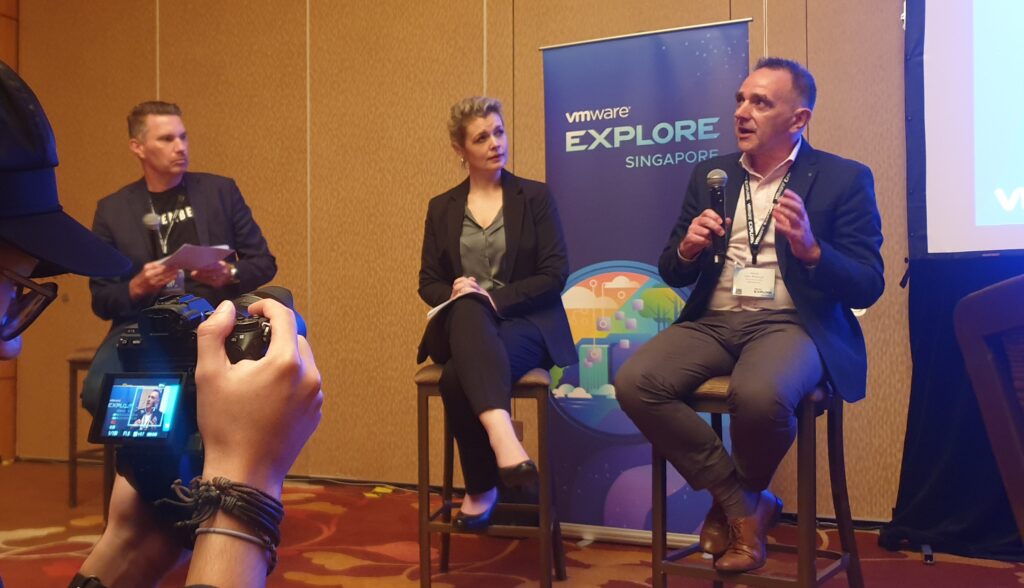
(Source – Shutterstock)
Will economic uncertainties affect tech spending in 2023?
|
Getting your Trinity Audio player ready... |
As the tech industry continues to see layoffs in the final quarter of 2022, there is concern about how organizations will allocate their tech spending for 2023. While many businesses today understand the need to invest in technology to remain competitive, the uncertainties in the global economy are also making them reconsider their spending next year.
The tech industry itself has also reduced its spending, with some tech vendors aiming to focus only on products they are certain can be profitable. Innovation in the tech industry is not expected to slow down but with layoffs and funding cuts, there are concerns about whether the industry can cope with the increasing demand for better products and services.
There are two main areas tech spending will likely focus on in 2023. The first would be how to make the most of existing services and scale up from there. This includes investments in cloud services, especially in data management. The second main area of focus would be cybersecurity. With threats becoming increasingly sophisticated and frequent, adequate spending to upgrade cybersecurity would be essential.
With these two areas key to businesses in 2023, the next concern would be having the right skills to make the most of the technology. One of the most common mistakes organizations make in their tech spending is having a random selection of technology. For many organizations, investing in AI and the cloud seems essential for their business but many also end up not sure how to make use of these technologies.
During a recent panel discussion at the VMware Explore conference in Singapore, Anna Green, Head of SMB, Asia Pacific and Japan at Amazon Web Services pointed out that while economic uncertainties will undoubtedly affect business decisions, what’s happening now is that tech companies are trying to focus on the things that businesses do have concerns around in environments where there’s uncertainty.
“The first is caution, which is the return on investment from a cost perspective. While moving to the cloud speaks for itself, there are also security concerns. For example, by changing the way in which supply chains are operating internationally, material change, and such. All these macroeconomic conditions mean that even if you haven’t made a move to the cloud, you are going to be thinking much more intentionally about it now,” explained Green.

Henk Van Rossum, General Manager, Group Cloud, Infrastructure and Operations at International SOS speaking at a forum during VMware Explore with Anna Green, Head of SMB, Asia Pacific and Japan at Amazon Web Services and Paul Simos, Vice President and Managing Director of Southeast Asia and Korea at VMware
Echoing her, Henk Van Rossum, General Manager, Group Cloud, Infrastructure and Operations at International SOS, shared how the organization has been using the cloud for its services. Interestingly, Rossum also stated that when businesses invest in the cloud, what they leverage there is the knowledge of the past.
“I don’t believe in models there you think that you can do everything in-house now, if you’ve done anything, then why not because the definitions are more brains outside your company than insight. as to we have to bring the outside world in. If you look at tech partners, they have a section and reputation to keep in mind. The effort on security with those partners is tremendous. And it’s even much more than you will ever be able to do yourself. And that’s something you will feel you can leverage.
Now going back to the business case, it may not always be financially profitable. But if you don’t secure your business, you’re simply out. These are all the aspects coming in that may be the best mistakes, because it’s between being broke, or being in business,” said Van Rossum.
For Paul Simos, Vice President and Managing Director of Southeast Asia and Korea at VMware, having the right architecture and the vision that businesses are asking support for is key. This allows them to make the right investments and understand if something’s a true financial ROI or a risk compliance drive.
“I think for issues like risk, security, and compliance, the overall costs are things that customers can get more control of if they have the right architecture governing. What we see is a lot of the challenges surface, because customers start on a journey and end up somewhere where they’re not quite sure how they’ve got here and where they are. Our big believer is having that right architecture and the vision that you’re asking for support on from your board,” commented Simos.
When it comes to cloud services, having complete visibility is critical for organizations to understand how they are investing in their technology and avoid ending up in cloud chaos. Businesses will need to continue their tech spending, even though there may be uncertainties in a cloud smart way. The only question is, will they do it the right way?
As Van Rossum puts it, “There’s only one way and that’s forward, you cannot go backward because you will miss out on opportunities in the market. And if you don’t move forward, there will be someone else moving forward faster. So, are you coming to disrupt yourself? That’s the core question to think about. There is no choice of not doing it. It’s the choice of how you do it.”
READ MORE
- Safer Automation: How Sophic and Firmus Succeeded in Malaysia with MDEC’s Support
- Privilege granted, not gained: Intelligent authorization for enhanced infrastructure productivity
- Low-Code produces the Proof-of-Possibilities
- New Wearables Enable Staff to Work Faster and Safer
- Experts weigh in on Oracle’s departure from adland
